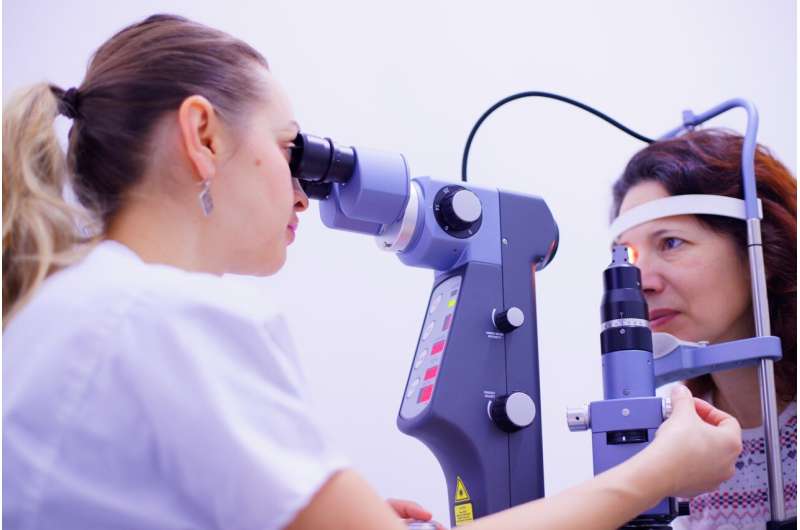
Patients who live in rural communities, Hispanic patients and Black patients with pre-existing diabetic retinopathy are less likely to receive annual diabetic eye exams than white patients, according to a recent Northwestern Medicine study published in JAMA Ophthalmology.
The findings demonstrate how social determinants of health can fuel disparities in monitoring for diabetic retinopathy, a common complication of diabetes, for patients of different racial and ethnic groups.
“This points to the need to really understand the ‘why’ factor and how we can actually turn the corner to get these patients to be seen more often so that they don’t have vision-threatening diseases,” said Dustin French, Ph.D., professor of Ophthalmology and of Medical Social Sciences in the Division of Determinants of Health, and senior author of the study.
More than 38.1 million adults were living with diabetes (type 1 and type 2) in 2021, according to estimates from the Centers for Disease Control and Prevention. A common complication of diabetes is diabetic retinopathy where high blood sugar levels damage blood vessels in the retina, which can lead to vision loss and permanent blindness.
Routine monitoring and annual eye exams can help prevent or identify diabetic retinopathy early on; however, disparities in access to high-quality eye-care persist, with previous work having shown that diabetic retinopathy risk and severity is higher in Black patients with diabetes compared to white patients.
In the current study, French and his team aimed to determine the association between multiple social determinants of health and associated factors—including ethnicity, urbanicity of residence, health insurance type and diabetes type—and monitoring for diabetic retinopathy in patients of different racial and ethnic groups with diabetes.
The investigators analyzed data from the Sight Outcomes Research Collaborative (SOURCE) Ophthalmology Big Data Repository, which included electronic health record data from 11 U.S. medical centers of more than 37,000 patients between the ages of 18 and 75 years who were diagnosed with diabetes type 1 or type 2.
Notably, the investigators found that white patients with diabetes living in rural communities had 25% lower odds of going to an eye-care visit, while Black patients living in rural communities had 88% lower odds of eye-care visits.
White patients with preexisting diabetic retinopathy also had 16% higher odds of eye-care visits compared to those without preexisting diabetic retinopathy, while Black patients with preexisting diabetic retinopathy had 15% lower odds of eye-care visits.
Additionally, white patients with Medicare and Medicaid were also less likely to receive eye-care compared to patients with commercial health insurance, and Hispanic patients had 15% lower odds of eye-care visits compared to white patients.
“These social determinants of health—where patients live, their insurance type and whether they had preexisting diabetic retinopathy—were significantly associated with receiving an annual eye exam. More specifically, African American patients were less likely to have that annual eye exam if they had preexisting diabetic retinopathy,” French said.
According to French, policy-backed approaches that improve the likelihood of eye-care visits for these high-risk patient groups are urgently needed.
“It’s really a policy issue that’s at the corner of how we treat and care for the most vulnerable patients that are most likely to have visual impairment because of complications of diabetes,” French said.
More information:
Azraa S. Chaudhury et al, Race, Social Determinants of Health, and the Quality of Diabetic Eye Care, JAMA Ophthalmology (2024). DOI: 10.1001/jamaophthalmol.2024.3528
Citation:
Social determinants of health associated with diabetic eye-care quality (2024, September 16)
retrieved 21 September 2024
from https://medicalxpress.com/news/2024-09-social-health-diabetic-eye-quality.html
This document is subject to copyright. Apart from any fair dealing for the purpose of private study or research, no
part may be reproduced without the written permission. The content is provided for information purposes only.



